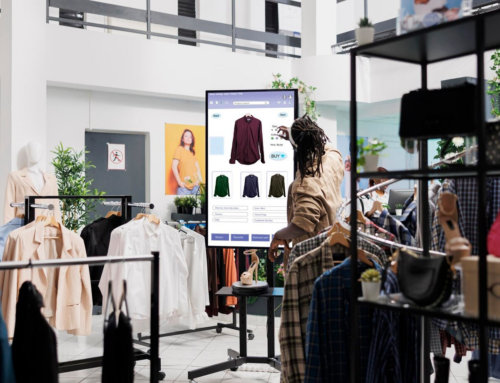The world of Digital Marketing is constantly evolving, and it can be hard to keep up with existing and new phrases and terminology. We have compiled and alphabetised a glossary of the most popular digital marketing words you need to know.
Check it out!
Acquisition: Google Analytics Acquisition section tells you where your traffic is coming from, like social media sites, search engines or links to your website.
Ad: An individual element created to generate paid traffic. An ad may take different formats, for example a video or image, and be distributed in different networks.
Ad Group: A group of ads with the same target and theme.
Alt Text: The alt text is what you see in the code for any given image. It is the textual representation of an image and communicates both the appearance and function of that particular image. They provide descriptions for visually impaired users, and allow the crawlers to better index images.
Average Session Duration: Shows an overview of people visiting your website and how long they spent there. For example, if you have two users who spent 3 minutes and 1 minute in one visit, then the average time on site would be 2 minutes.
Average Time on Page: Similar to the average session duration, the average time on page shows users’ level of engagement. On a given page, if you notice that views are coming from just one or two pages, this may point to an issue with context or with tight copy.
B2B: Business-to-business is a situation where one business makes a commercial transaction with another.
B2C: Direct-to-consumer refers to selling products directly to customers, bypassing any third-party retailers, wholesalers, or any other middlemen.
Blogging: Blogging refers to writing, photography, and other media that are self-published online. A primary component of the inbound marketing method, blogging helps to drive website traffic, builds thought leadership and authority, and drives leads.
Branding: Anything that brings about awareness of a specific product, service, or business while separating it from other establishments.
Bounce: A bounce is an occurrence on one of your website’s pages. It happens when a person visits your site and views only that one page.
Bounce Rate: The bounce rate is measured as the number of users who visited your site and left again with only one pageview, which can provide insights about the performance of your content. However, it is important to consider that a high bounce rate doesn’t necessarily mean that content is performing poorly. Context here is very important
CTA: Call to action is a marketing term for any device designed to prompt an immediate response or encourage an immediate sale.
CMS: Content Management System is the software on which a website or blog is built to manage its content.
Content: Information created to inform, educate, or influence a specific audience. Content may be released in the form of text, image, video, or audio.
Content Metrics: Content metrics are those that deal with consumption, or how many people have viewed or accessed your content
Conversion Rate: In e-commerce, conversion marketing is marketing with the intention of increasing conversions–that is, site visitors who are paying customers.
Channel: Digital marketing consists of lots of different tools, which are all used to promote your business. In Google Analytics, the channels group sources of traffic that you may use for this purpose and give you a summary. The default channel grouping includes “Organic Search”, “Paid Search“, “Social” and “Email” which automatically combines the sources, types and mediums.
Clicks: The number of clicks your ads collect are recorded even if the person didn’t end up on your site.
Cookie: Cookies are a small text file that stores simple pieces of information related to user visits. For example, Google Analytics uses cookies to identify new or repeat visitors. If a user has an existing cookie, then the system will report them as a returning user and update their expiration date.
Cost: The cost of a marketing campaign
Cost Per Click (CPC): Consumers are often shown an advertisement or sponsored message as they explore the internet; these messages are known as pay-per-click (PPC) marketing. A cost per click (CPC) is calculated by dividing the total cost of these clicks with number of clicks.
Call-To-Action (CTA): A Call to Action (CTA) is a statement designed to get a quick response from the person reading it. It functions as part of a marketing strategy and is used to encourage people in your target market to take immediate action.
Click-Through Rate (CTR): The rate at which people who see your ad increase their interaction with it. Certain CTR statistics can be used to figure out how effective your keyword and ad strategies are proving to be.
Direct Traffic: Traffic from keyword-specific search engines is considered direct. This includes people typing in your URL or clicking a link in an email that didn’t include campaign tags. It also includes cases where we are unable to identify user information (like if the visitor has cookies disabled).
Domain: Your domain name is the web address of your site. You can tell it’s yours because it will always be at your own personal site and not, for example, at a large company website.
Demographics: A specific profiling aspect that takes into consideration age, gender, income, family life, social class, etc. It’s often used in segmentation or for focal points in marketing and advertising strategies.
Digital Marketing: Any form of marketing done entirely online.
E-Commerce: Electronic Commerce is the act of selling goods or services online.
Email Marketing: The process of sending a strategic message directly to a contact or group of contacts via email for the purposes of educating, engaging, and/or encouraging them to take a specific, profitable action.
Engagement: Engagement marketing is the use of strategic, resourceful content to engage people and create meaningful interactions over time.
Email Traffic: Email marketing can come from various sources, as long as one of the traffic sources is ’email.
Entrance: Called the landing page, the first many pages a person sees when they visit your site is known as an “entrance” page.
Facebook Pixel: A Facebook pixel is a code that you can put on your site to track visitors. This allows you to create targeted ads based on their interests and see what they’re doing when they visit your page. Implementing an audience targeting strategy allows you to more specifically engage with your target audience. It helps you reach the right people at the right time and can be used to track the impact of your organic and paid social campaigns.
Filter: You can use filters to include or exclude certain data points from your reports, for example exclude sessions done by you.
Goal: Goals are used to track actions that you want users to take on your website. You might use a Goal, for instance, to track email subscriptions, inquiries or site registrations. Google Analytics allows you to set up goals based on certain events and the type of person they target. Goals can be set up to capture people who visit a specific page, view a certain number of pages or even those who trigger an event. Goal completions that happen during different parts of an online session will only count as a single conversion.
Google Ads: Google AdWords is Google’s paid advertising platform that displays ads to people searching on Google, third-party search sites, browsing websites and mobile apps.
Google Analytics: Google Analytics shows the number of visitors to your site, what they like and dislike, where they spend time, which pages convert the best, and much more in order to build a better website for your customers.
Heading Tag (H Tag): Headings play a big role in web page creation. They can be defined with H1-H6 tags, with H1 meaning the most important heading on the page (the largest or boldest). It’s important to include keywords in the heading tags so that search engines can identify what they’re about. This will help them pull up the page when somebody searches for those words.
Hashtag: A hashtag is a metadata tag that is prefaced by the hash symbol, #.
Hyperlink: Hyperlink computing, a hyperlink, or simply a link, is a reference to data that the user can follow by clicking or tapping. A hyperlink points to a whole document or to a specific element within a document. Hypertext is text with hyperlinks. The text that is linked is called anchor text.
Infographic: Infographics are graphic visual representations of information, data, or knowledge intended to present information quickly and clearly.
Impression: An impression is counted each time an ad is shown to a user, regardless of whether or not they click it.
Keyword: Keywords are largely important to SEO as they’re the words you want people to search for, ensuring that your content is found more easily and making your business much more likely to succeed. In SEM, keywords are your main targeting methods. They instruct Google about when to show ads from the keyword’s ad group.
Keyword Research: Keyword research is an important SEO task that involves determining popular search phrases. From there, you can figure out what to rank for on Google Search. Marketing experts can use research about search volume and competition to bring the best content up to the top of search engines. This requires some keyword research before you go live with your website, but will help you maximize your visibility and make it easier to rank in the organic listings.
KPI: Key performance indicators are a measurable value that demonstrates how effectively a company is achieving key business objectives.
Landing Page: In online marketing, a landing page, sometimes known as a “lead capture page”,”single property page”, “static page”, or a “destination page”, is a single web page that appears in response to clicking on a search engine optimized search result.
Lead: A marketing lead is a person who shows interest in a brand’s products or services, which makes the person a potential customer.
Lead Generation: In marketing, lead generation is the initiation of consumer interest or enquiry into the products or services of a business. Leads can be created for purposes such as list building, e-newsletter list acquisition, or for sales leads.
Lead Nurturing: Lead nurturing is the process of building relationships with prospects throughout the purchase funnel.
Meta Description: The meta description is a short summary of the webpage, delivered in HTML. It can often appear in search engine results pages and have a big influence on where people click. Typically, it’s up to 160 characters long.
Meta Tags: Tags such as meta tags are placed in the section of your code, and are used to describe the content of pages. A meta description tag is an example of this.
Market Research: Market research is an organized effort to gather information about target markets and customers: know about them, starting with who they are. It is a very important component of business strategy and a major factor in maintaining competitiveness.
Market Penetration: Market penetration refers to the successful selling of a product or service in a specific market.
Niche Market: A niche market is the subset of the market on which a specific product is focused.
Negative Keyword: This is a keyword used to prevent your ad from being triggered by a certain word or phrase. Your ads won’t be shown to anyone who search for that phrase. This is also known as a negative match.
Organic Traffic: Organic traffic occurs when people click on a free result from a search engine. A Google searches example: people clicking through to your site from a free link in the search results page.
Open Rate: Open Rates are a measure of how well campaigns are performing. The open rate is a percentage that tells you how many successfully delivered campaigns were opened by subscribers.
PPC: Pay-per-click is an internet advertising model used to drive traffic to websites, in which an advertiser pays a publisher when the ad is clicked. Pay-per-click is commonly associated with first-tier search engines.
Pages Per Session: A metric that shows the average number of pages viewed in each session
Pageview: A pageview is recorded whenever a user views one of the pages on your website. By default, in the Google Analytics Pages report, your pages are ordered by popularity based on pageviews. This means you can see which content has been viewed most often so far.
Paid Search: Paid search is a form of advertising where advertisers are able to demonstrate ads on SERPs for such search engines as Google and Bing
Paid Traffic: Paid traffic, are people who visit your site after clicking a link in a digital marketing campaign or adds.
Percentage of New Sessions: This metric shows you the percentage of sessions for people who are visiting your website for the first time. A look at this percentage will give you a sense of how effective your marketing and advertising efforts are. If 100 people visited your website out of a total of 200 sessions, that would mean 50% are new sessions.
Quality Score: A quality score is the measurement of how relevant an advertiser’s ads are to what someone is interested in. It is based on a range of factors, including click-through rate, relevance and your landing page experience. The Quality Score you see inside your account isn’t the same one used for determining how high up your ads are placed in the real-time ad auction. The one on your account is a cumulative calculation of performance from the past 30 days.
Traffic: A referral is reported when a user clicks through to your website from another third-party website. The referrals report shows you all of the domain names that have brought visitors to your site and how many users they sent.
Remarketing: Remarketing typically allows advertisers to reach audiences on a site who have already made a purchase or visit the website. Past visitors will see these ads while browsing the web. You can use this to your advantage by capturing their attention before showing them a new offer or product.
Return On Ad Spend (ROAS): One way of measuring advertising performance is by dividing the Total Revenue a company makes from advertising with the total amount the company spends on it. In the example below, if you spend $5,000 but get back $10,000 from their ad campaign on Google Ads, your Returns on Advertising Spend (ROAS) would be 200%.
Search Query or Search Term: Someone might use a search query that doesn’t match your keywords, so try adjusting your keywords to see if it increases the volume of traffic you’re getting.
SMM: Social media marketing is the use of social media platforms and websites to promote a product or service. Although the terms e-marketing and digital marketing are still dominant in academia, social media marketing is becoming more popular for both practitioners and researchers.
SEO: Search engine optimization is the process of improving the quality and quantity of website traffic to a website or a web page from search engines. SEO targets unpaid traffic rather than direct traffic or paid traffic.
SEM: Search engine marketing is a form of internet marketing that involves the promotion of websites by increasing their visibility in search engine results pages primarily through paid advertising
UVM: A monthly unique visitor refers to an individual who visits a website at least once within a given month.
Website Traffic: Website traffic is the amount of data sent and received by visitors to a website.
Webinar: A webinar is typically a live interactive event that attendees join on their desktop or mobile device over the internet.
VIMAR Digital Marketing
VIMAR provide a full circle digital marketing package and can meet all your business marketing needs.
Outsourced Marketing is becoming increasingly popular for organisations. Outsourced Marketing allows a organisation to spend their time and energy on other areas of their business while a team of proffesional marketers work on branding and advertising on your behalf.
If you’re struggling with marketing and generating leads, then contact VIMAR for a free consultation. Let’s use the power of digital marketing to promote your business and increase your brands awareness today!





Keep In Touch